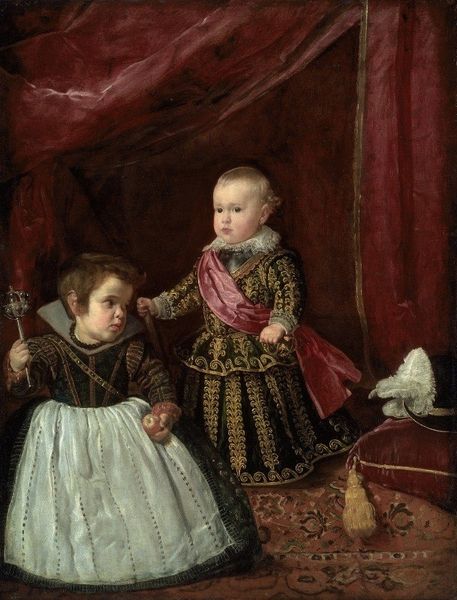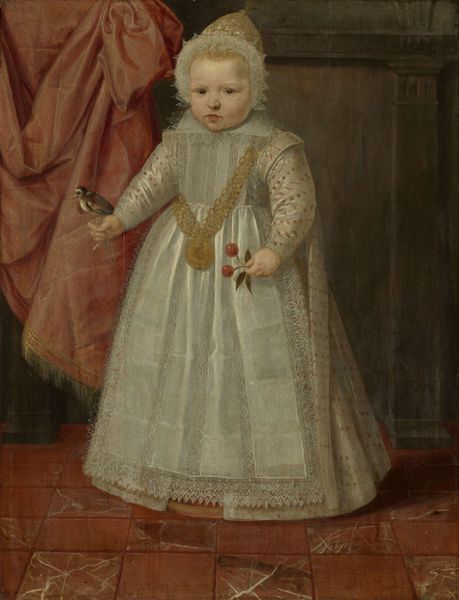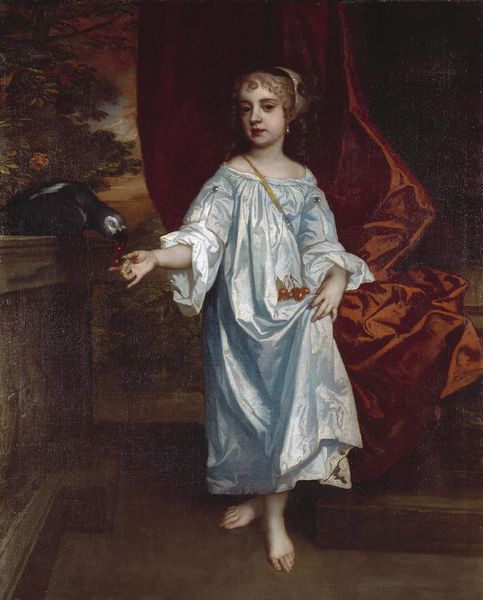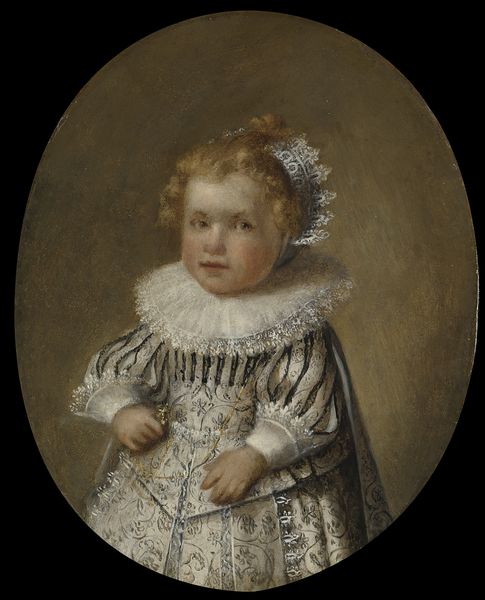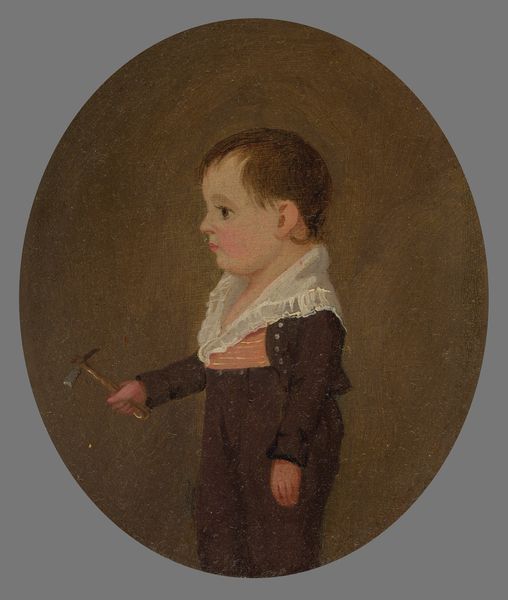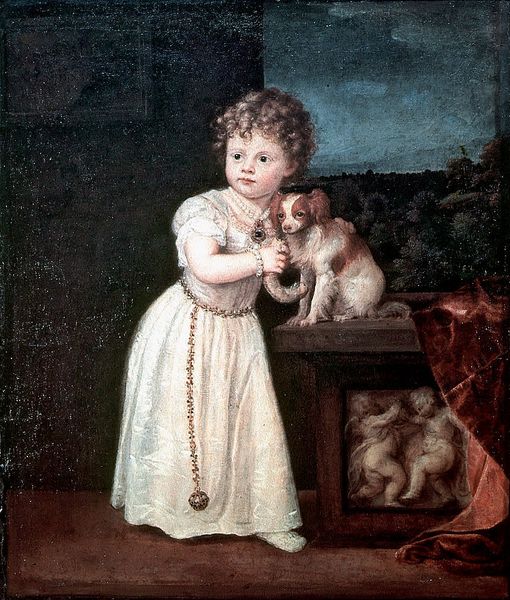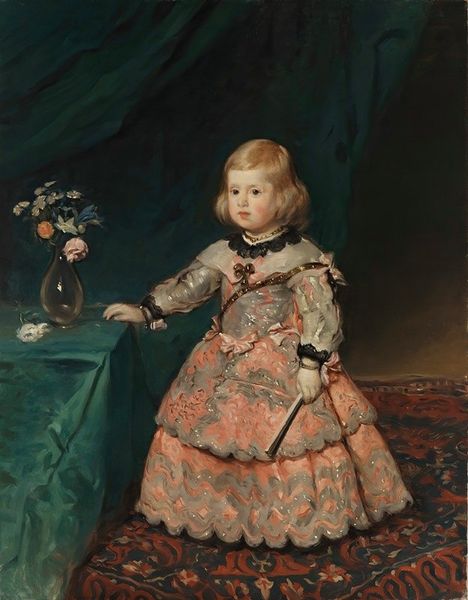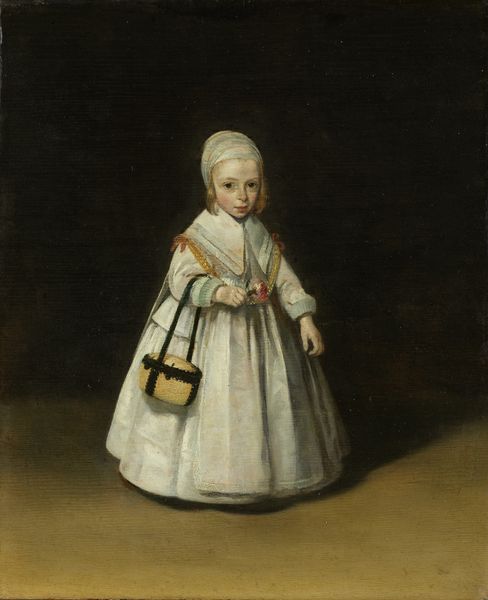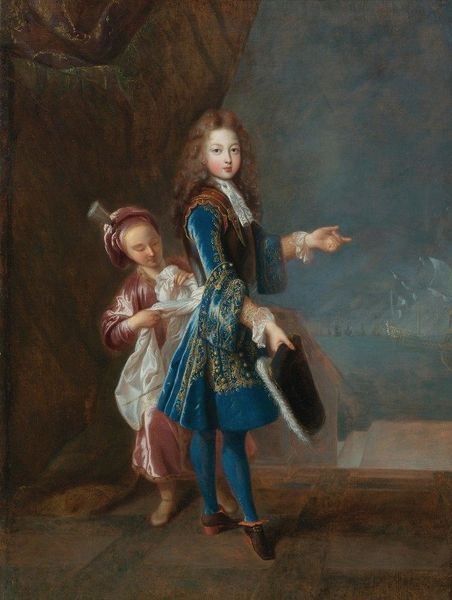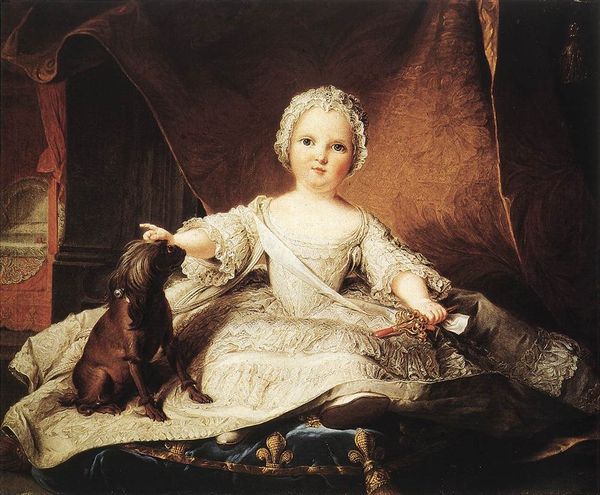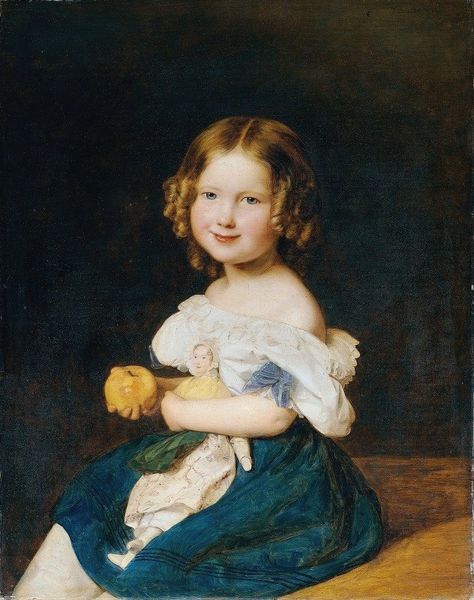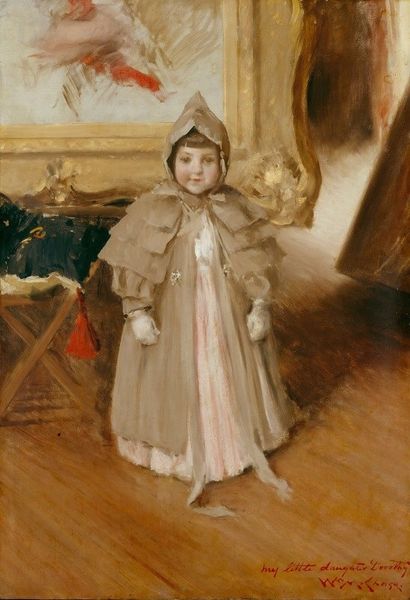
painting, oil-paint
#
portrait
#
figurative
#
baroque
#
painting
#
oil-paint
#
figuration
#
history-painting
#
academic-art
Copyright: Public Domain: Artvee
Curator: Velázquez’s "Prince Baltasar Carlos in Silver," painted in 1633, is quite remarkable. The level of detail achieved with oil paint is astounding, especially considering the complex costume. Editor: My first impression is a somber formality, though there is something inherently sympathetic about how Velazquez portrays such a young boy burdened with the weight of succession. Curator: The shimmering effect he achieves across the surface, suggesting rich brocade and intricate embroidery, must have demanded tremendous skill and the collaboration of workshop assistants. You know, it speaks volumes about the value placed on luxury textiles in that era and the labor involved in their production. Editor: Absolutely, but looking closer, you can also see how the attire serves to visually diminish Baltasar’s youth and innocence. The silver garb, coupled with that delicate lace collar, transforms the prince into a symbolic figure rather than just a child. This kind of staging was common; royal portraits often suppressed individuality to communicate power and continuity. What do you make of the composition itself? Curator: Interesting point. Compositionally, the arrangement feels intentionally rigid. Notice the contrasting textures, juxtaposing the heavy drapery with the light reflected off the metal and silver threads woven into his attire. It highlights the materials, the physical stuff of power. The question becomes who actually profits from its presentation? Editor: Yes, consider too, that portraits like this would function as visual propaganda. In a world constantly grappling with succession struggles and courtly power dynamics, his youth became a tool in asserting his future dominance in contrast with the turbulent backdrop of Spanish history and internal conflicts. Curator: Right, understanding who profited from the circulation of images like this tells us who actually had power in seventeenth-century Spain. So it reflects and reproduces social hierarchy. Editor: Exactly, seeing the layers within this, I see more than a portrait of a royal child but a study in the ways that art reinforced political ideas around destiny, and that it reminds me of so much that persists in our image saturated contemporary culture. Curator: Yes, it's an interesting piece both technically and for understanding period structures of power through the materials and processes involved in making art.
Comments
No comments
Be the first to comment and join the conversation on the ultimate creative platform.
